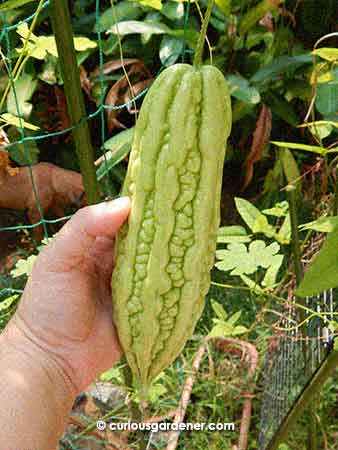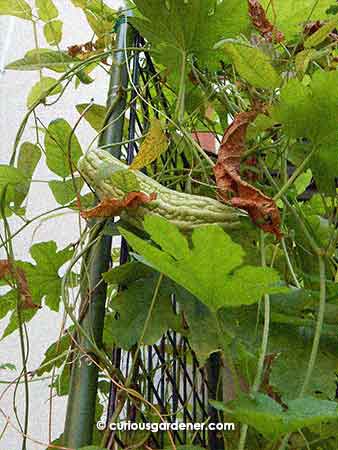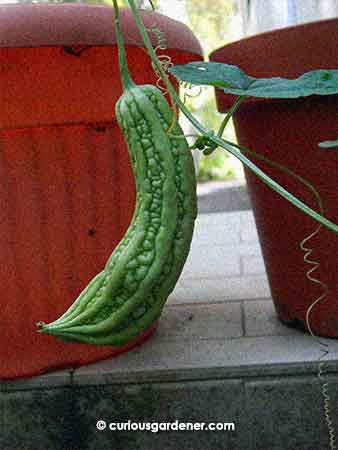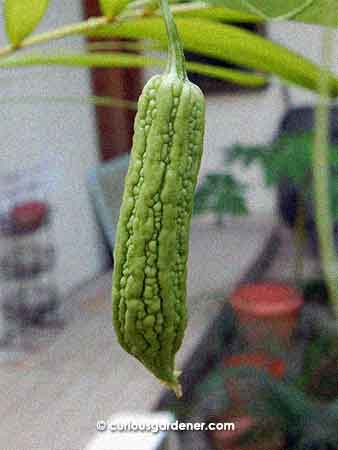
This was the first big bittergourd grown here. It’s probably not as big as it could be because it had to struggle through the bad hazy weather that we had last month. However, it’s still the biggest so far.
After several years of growing edibles, we finally have regular bittergourds here in our garden. Our friend from Thailand started off the plants in July, and they’ve finally reached maturity.
Of course, once that happens, you have to keep an eagle eye on the plants, because the fruits have the tendency to hide as they grow, and in some cases (from our experience with the smaller variety), until they’re overripe.
These plants already have us on our toes…
In terms of flavour, they’re not extremely bitter – but it seems that this is a common issue these days. I don’t mind it that much, but just hope that the fruits haven’t lost nutrition too. Bittergourds (or bitter melons, as some people call them) are said to be rich in phytonutrients, vitamins B and C, folates, flavonoids and minerals like zinc, iron, potassium and magnesium. The fruit is also supposed to help fight diabetes and is good for digestion. That’s a pretty impressive record – and a good reason to keep growing them.
© 2014 curiousgardener.com All rights reserved.



